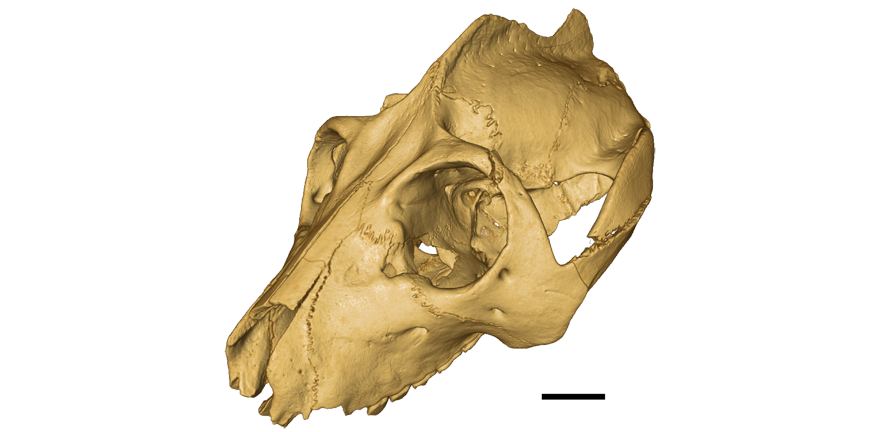
Submitted by Rachel Aucott on Tue, 14/09/2021 - 10:40
The pattern of evolutionary relationships among species is crucial for understanding the diversity of life. Which species share evolutionary descent from a recent common ancestor, and which share one that is more remote? Figuring out this pattern for living species benefits from the presence of many kinds of information, from DNA to behavior to soft-tissues. Fossils almost always lack DNA and other features that decay quickly following the death of an animal.
In a new study, Dr Robert Asher and Dr Martin R Smith (University of Durham) asked if it is still possible to understand evolutionary relationships using information from fossils. Do the fragmentary bones and teeth present in fossils have enough information to reconstruct where they fit on the evolutionary Tree of Life? To find out, they focused on branches are known to be correct, and tested if information from bones and teeth helped to identify those branches. They examined living mammals and birds with known evolutionary relationships, treated them as if they were fossils, and tried to reconstruct their placement on the Tree.
They found, firstly, that combining information from bones and teeth with DNA can increase the chances of identifying known branches. They also found that well-preserved fossils (with more complete bones and teeth) performed better than incomplete fossils. Some paleontological studies do particularly well at reconstructing known branches; others are not so successful, most likely because it is more difficult to accurately recognize evolutionary relations using very old fossils compared to younger ones. It is also difficult when paleontologists do not include living species in their analysis, or when they do not include the features of bones and teeth that fossils have in common with living species. They did not find that loss of DNA or other fragile parts of a species leads to mistakenly identifying fossils as occupying especially primitive branches.
They concluded that fossils are best analyzed alongside living species, and that the anatomical information from bones and teeth is useful for recognising patterns of relationships on the evolutionary Tree of Life.
Paper: Asher RJ, Smith MR. 2021 "Phylogenetic Signal and Bias in Paleontology" Systematic Biology DOI:10.1093/sysbio/syab072
Photo: Digital rendering of CT-scanned skull of fossil primate Adapis parisiensis (UMZC M.538) shown in dorso-lateral view. Scale bar = 1cm. (Image courtesy of University of Cambridge Museum of Zoology, specimen UMZC M538. CT scan rendered in 3D by Robert J. Asher)
